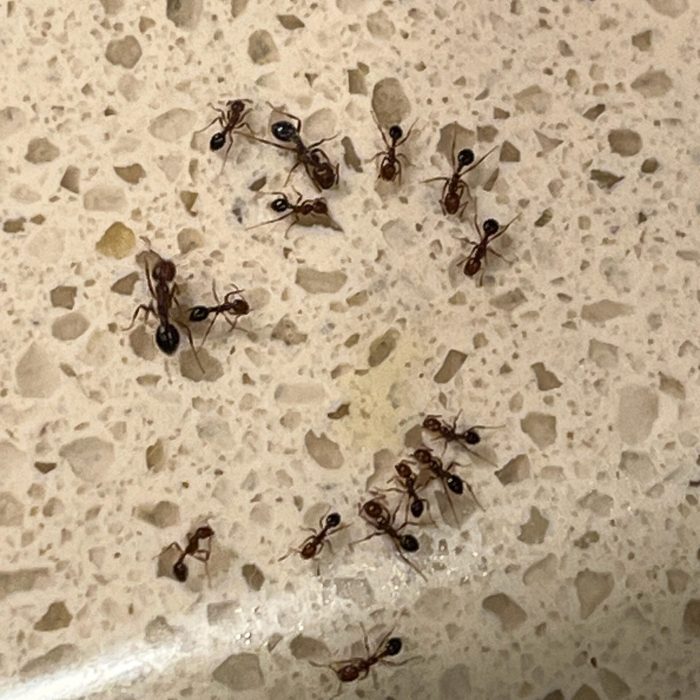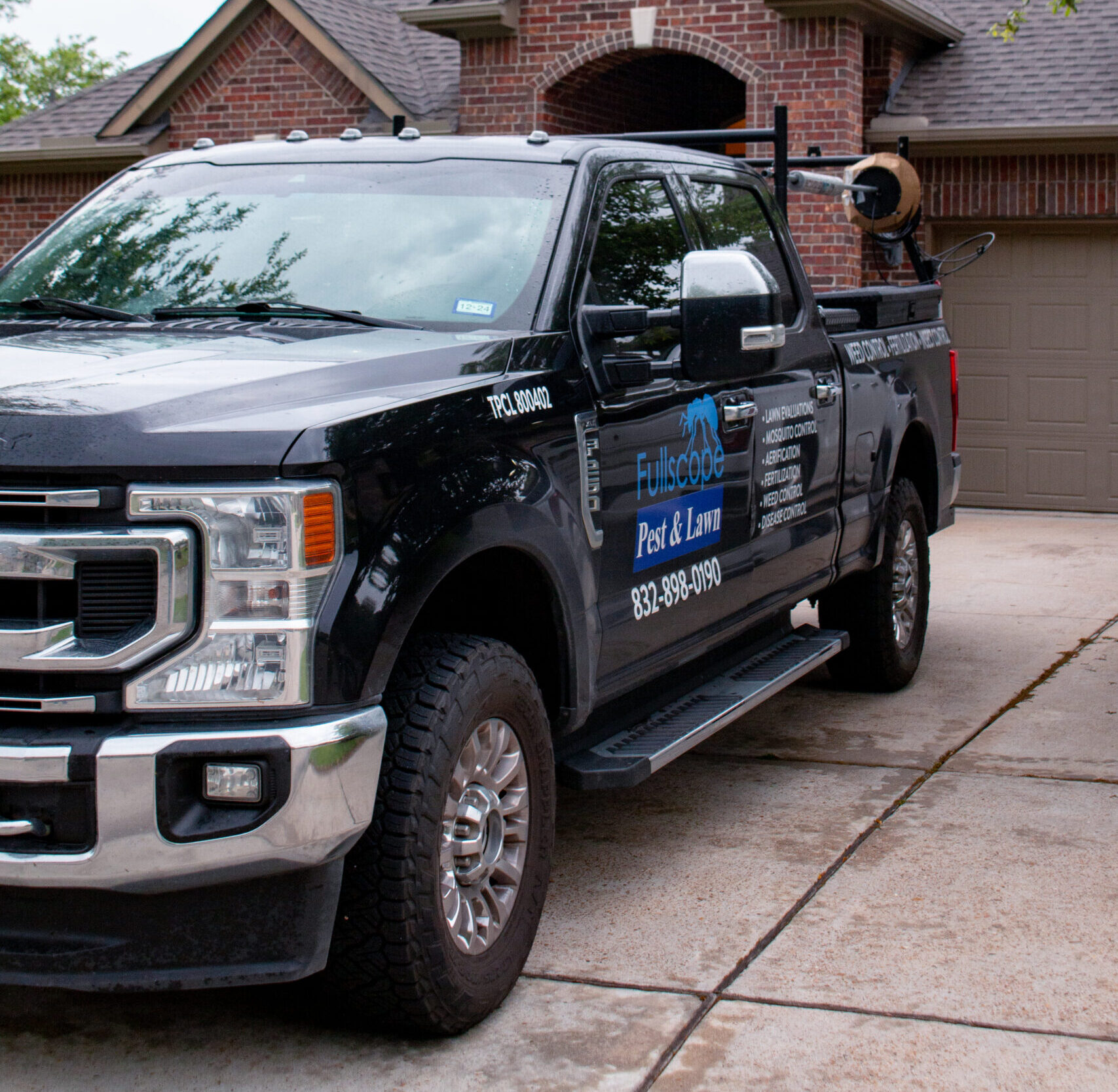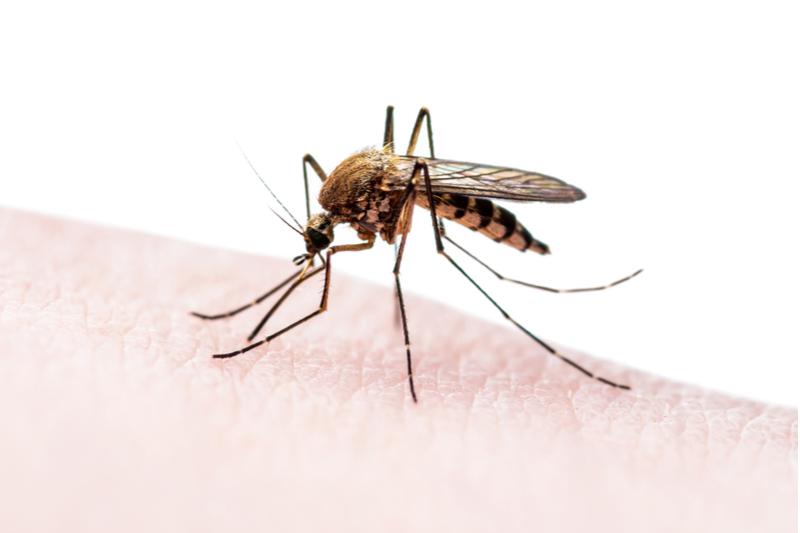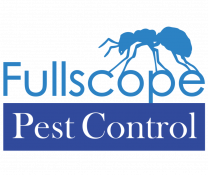What is An Overwintering Pest?
It may not feel like it yet in some parts of the state yet, but Fall has officially arrived and before you know it, Winter will be on the way!
While it may be exciting time to enjoy some cooler weather once again and break out the winter fashion accessories, it’s also a very exciting time for overwintering pests!
Hey, we have all been there planting our mums and pansies, thinking college football and not about pest, who wants to. We want to take our sweaters out, start wearing boots and finally stop worrying about a heat index of 110 degrees in Houston, TX.
But Now is the time to spend a couple of hours this weekend doing a couple of things to keep overwintering pest out of your home.
While some pests disappear when it gets cold, others stick around and move their families into your home uninvited, nuzzled in some nook or cranny, multiplying!
Overwintering pests like boxelder bugs, ladybugs, cluster flies and stink bugs start to migrate indoors to stay warm around this time of the year, which means they are looking to get into your home! (You also can’t forget about rodents!)
These pests are notorious for sneaking into homes, cozying up in cracks and crevices and multiplying in numbers. When spring returns and they start LITERALLY coming out of the woodworks, it isn’t pretty!
Overwintering pest such as ladybugs can stain your walls and stink bugs emit a horrible smell as we are all familiar with.
Must Read :BED BUG EXTERMINATION: WHAT TO EXPECT
Our customers usually report an unexpected increase in insect activity during this time of year, especially from overwintering pests which like to infiltrate homes or around the house in large numbers when it gets colder. You have to give them credit for their resourcefulness.
Lucky for you, Full Scope Pest Control knows all about overwintering pests and how to inspect and treat for them.
Learn more below about overwintering pests and then hire us to pest-proof your house this season.
Might Also Enjoy Reading Simple Steps to Winterize Your Home Against Pest
Overwintering: The Way Insects and Pests Survive The Cold
Overwintering is a term used to indicate how an animal, insect or plant stays alive over the winter season when the temperatures are too cold for comfort. Usually some animals tend to either hibernate (bears for example) or migrate (birds) during the winter. Insects who overwinter don’t really hibernate in the way bears do, nor do they migrate away from the area they are established. Instead they try to find a temporary residence in a tree or more often than not, seek a place indoors for warmth.
If there’s anything that insects are experts in, it’s hiding and survival. Wherever insects happen to find themselves or whatever the weather conditions are, insects will find a way to adapt or make the necessary adjustments to stay alive and thrive. You’ve probably seen it yourself, no matter how harsh the weather can be outside, you may still see a bug wandering around.
When the weather reaches freezing temperatures, insects are well prepared either via changing their normal everyday behaviors or by using their own physical traits and abilities to their advantage to improve their chances of survival.
For example, some insects will reduce their regular active routine so they do not expend so much energy during the winter period while others totally halt all activity and essentially go into insect hibernation, a process called diapause.
Surprisingly, there are some insects which combat the freezing cold by oozing out a sort of antifreeze fluid from their bodies like the fluid we put in our cars to keep it from freezing out! You heard it correctly, their body will release alcohols, sugars, and ethylene glycol to keep themselves warm and toasty in frigid weather.
How Overwintering Pests Survive Outdoors
When attempting to survive outdoors, overwintering insects and rodents scan the area for dry, enclosed spaces for warmth. They will resort to digging a living space for them underground, moving to the inside of trees and under tree bark or covering themselves under leaf litters to overwinter.
Insects can either be freeze avoidant or freeze tolerant. Pests which can tolerate freezing temperature do not freeze entirely but instead their internal fluids freeze which pulls moisture from the cells in their body so they won’t reach the point where they freeze out and die.
Insects will modify their diet habits to help their chances of surviving the freezing cold by drinking and eating less since it will lessen the chances of the fluid freezing inside their bodies.
The stage of insects with the highest chance of survival in frigid weather conditions are either the egg or pupae stage because both of these phases are protected via shells and cocoons they stay in and do not need to eat or drink anything in this state.
On the other hands, there are overwintering pests which rather than roughing it outdoors when it’s cold, target households to shack up in. When that’s the case, you could have an infestation under your nose and not even know it until it’s too late.
Reference:
What to Do when Overwintering Pests Emerge
The Most Common Overwintering Pests
Lady Bugs

Ladybugs are more commonly referred to as Asian lady beetles and while they are not a harmful insect to us humans, infestations of them have quickly become a rising issue in the US because of the fact that they overwinter in homes and apartments.
Will pest infestations this winter be worse than most winters?
Pests need food, water, and shelter, just like humans. If conditions are good for any of these, a population will thrive. If all three are available, populations will explode. As humans, we provide the shelter, whether it be our homes or places of business. This is also why pests populations vary from region to region of the country. If there is a wet summer with abundant plant growth, expect to see more rodents, insects, and other pests. Dry summers will lead to winter ant populations seeking food and water.
What types of pests can homeowners expect to see this winter?
This time of year, the house mouse is the most common pest in and around homes as well as spiders, squirrels and other small insects. While spiders for the most part are not aggressive, many homeowners and children find them frightening. Mice on the other hand can be dangerous as they eat and contaminate our food, chew up woodwork and can create electrical fires by gnawing on wires. Other rodents such as chipmunks, squirrels, raccoons, and opossums can get into open areas seeking food.
We are hearing complaints that ladybugs are coming inside in huge numbers. Are these pests something we need to worry about?
Ladybugs are often described as a beneficial pest. This is because they help to rid your home and its surroundings of other more troublesome insects. However, many homeowners can get extremely frustrated when these little bugs make their way inside for the winter.
The good news about ladybugs is that once they are inside your home, they don’t reproduce or feed. They are merely a nuisance.
How do you get rid of ladybugs once they are inside?
Controlling these insects indoors consists of vacuuming or your best scoop-and-toss-outside method. If you use a vacuum, remember to remove the bag when finished. Seal it in a plastic bag and dispose of it with your normal garbage.
If the infestation is bad enough, consider calling in a professional to help you deal with the problem.
What are some other pests that homeowners need to be aware of this winter?
Cluster flies, a name that describes their habit of clustering in large numbers inside attics, also like the warmth of your home from late fall through early spring. These are large, black flies that show up in bedrooms and on windowsills.
They can be difficult to control in homes because they hibernate within inaccessible places, appearing on a sunny winter day, often near windows in the upper portions of the house, particularly in older homes.
What are the prevention steps for a cluster fly?
The best strategy with any pest is to prevent it from ever entering your home. Take some time before it becomes too cold outside to caulk around the outside of your home. Be sure to seal any crack or crevice that could act like an entry way for pests.
Are there any other steps that homeowners can take to prevent pests this winter?
The National Pest Management Association recommends the following steps to pest proof your home this winter:
- Frequent vacuuming can help to eliminate tiny pests or even food that other pests feed on.
- Make sure vents are screened and gaps around windows and doors are sealed.
- Keep tree branches and shrubbery well trimmed and away from the house.
- Inspect boxes, grocery bags and other packaging thoroughly to curb hitchhiking insects.
- Keep pet food and water areas clean and fresh.
- Keep basements, attics, and crawl spaces well ventilated and dry.
- Store garbage in sealed containers and dispose of it regularly.
- Store fire wood at least 20 feet away from the house and five inches off of the ground.
- Repair fascia and sofits and rotted roof shingles; some insects are drawn to deteriorating wood.
- Replace weather-stripping and repair loose mortar around the basement foundation and windows.
- A licensed and qualified pest control professional is your best resource to ensure these steps are completed properly.
Ladybugs have some pretty off-putting traits like the fact that they release an awful odor when they feel scared or are crushed and their tendency to leave stains on surfaces they walk across.
Another trait that makes ladybugs far from being ladylike is that they will bite when handled or in close contact. A number of our customers have reported to us that a ladybug actually bit them!
When winter arrives, it’s not uncommon to have ladybugs enter homes in huge numbers because they have a knack for sneaking their way inside by using any crack, crevice, and opening they can find so they can stay warm and toasty.
Rodents
While the mice and rats are technically not an overwintering insect, they do share the similar habit of targeting indoor dwellings when the temperatures are colder for warmth and to be in close proximity to food sources, which unfortunately, our homes have plenty of options to choose from.

Rats and mice are not only a creepy sight to see when they are scurrying indoors but they are also a serious health hazard because of their unsanitary tendency to contaminate food they get into and urinate and leave droppings everywhere. On top of that, they are chronic gnawers and will damage the wood of your home with their habit. This can be especially dangerous if they begin gnawing on wiring, creating the risk of a electrical fire.

Brown Marmorated Stink Bugs

Quick Stats:
- Color: Mottled grayish-brown
- Legs: 6
- Shape: Triangular or shield
- Size: ¾ inch long
- Region: Found in the eastern half of the United States, as well as California, Oregon, Washington, Arizona, New Mexico and Texas
What are stink bugs?
Brown marmorated stink bugs are an invasive species from Asia that arrived in Pennsylvania in 1996 and can now be found from South Carolina to New Hampshire and west to Indiana, as well as in California, Oregon, Washington, Arizona, New Mexico and Texas.
Why are they called stink bugs?
Stink bugs get their name from the odor they emit as a defense against predators, including birds, spiders and assassin bugs. When handled or disturbed, stink bugs are able to secrete a bad-smelling fluid from pores on the sides of their bodies.
Are stink bugs more prevalent during a specific season?
Adult stink bugs enter homes and other structures in the late fall to seek shelter from the winter weather, often from mid-September through mid-October. They reemerge from overwintering sites in early spring and try to exit, but sometimes enter living spaces instead.
Why are stink bugs problematic?
Stink bugs have the potential to spread throughout the country, which could be increasingly harmful to the agricultural industry, as they destroy crops.
Do stink bugs pose a threat to human health?
Stink bugs are not known to bite humans, but their tendency to invade homes in high numbers makes them a difficult pest to control once inside.
What can homeowners do to prevent an infestation?
- Seal cracks around windows, doors, electrical outlets, ceiling fans and light switches with a good quality silicone or silicone-latex caulk.
- Keep outdoor lighting to a minimum because stink bugs are drawn to light. Replace outdoor lighting with yellow bulbs, which are less attractive to stink bugs.
- Repair damaged window screens. Don’t forget to check for torn weather-stripping and loose mortar.
- Properly ventilate basements, attics, garages and crawl spaces to eliminate harborage points. Also, install screens over chimney and crawlspace vents.
- A licensed pest professional can pre-treat homes for stink bugs in the late summer or early fall just prior to their full maturation and congregation.
How can a homeowner get rid of stink bugs once they are inside their home?
- If stink bugs have already entered a home or building, use a vacuum cleaner to aid in their removal
- Remove the vacuum bag immediately to prevent odor from permeating the area, as dead stink bugs leave a residue inside the bag that can stink up your home.
- Seal contents from the vacuum bag in a plastic bag and dispose of it with your normal garbage.
- If an infestation has developed inside the home or building, a licensed pest professional should be contacted to evaluate and assess the severity problem and help to identify the access points for these invasive species.
Known in the pest control industry by their proper name–the brown marmorated stink bug–this pest is usually discovered infesting fruits and vegetables in gardens and on croplands. The stinkbug is an especially hated pest by the agricultural industry because when they have piercing or sucking mouthparts which they use to feast on crops and damage plants.
Stink bugs are early birds when it comes to starting the overwintering process compared to the other pests since they begin migrating into homes just as summer is starting to wind down. While they are good hiders, you are likely to smell them before you see them as their name suggests, they give off a pretty mighty stink wherever they are present.
Stink bugs are one of the more difficult overwintering pests to control because they multiply quickly and they have a hard exterior shell that can protect them against some insecticides.
Something you can do to make your home less appealing to stink bugs is to cut the lights off outdoors and reduce lighting indoors at night because they are attracted to light and will fly towards any light they see.
Cluster flies
Cluster flies prefer to live their entire lifespan outdoors, however when the temperatures drop in the Fall, cluster flies will fly in droves around houses and even try to find their way inside. Their name says it all; this fly isn’t just going to be a single solitary insect flying solo. No, they arrive and can hang around your home in large “clusters” of hundreds all clumped together.
Customers have called us up and reported discoveries of large groups of cluster flies bunched up on the sides of walls and in basements and attics. Cluster flies are especially common in multilevel homes, attic which have windows, and gaps around windows, doors, and chimneys.
Boxelder Bugs
The Boxelder Bug is named as such because it common dwells or is active on boxelder trees. But when winter arrives, they may trade the wooded shelter of a tree for the wooded shelter that is your home.
About a half an inch in length, they are black with red markings and can easily slip in through various points of entry in a home such as gaps in soffits and chimneys, electrical wiring cutouts, garage doors, windows that are not sealed well, and especially underneath siding and trim pieces along siding. These overwintering pests have been discovered in groups of thousands in secluded areas of the home, bunched up in a ball keep eachother warm!
As creepy as they look, boxelder bugs don’t bite, cause damage to the home nor are they disease carriers. Even so, you don’t want them in your home!
What You Can Do To Protect Your Home From Overwintering Pests
Aside from giving us a call to conduct a detailed inspection and treatment program to rid your home of these uninvited freeloaders, there are some things you can do to keep overwintering pests from trying to get into your home for warm shelter.
Place screens on doors/windows, seal gaps & crevices and other points of entry
- By taking away entry points, pests won’t will have a difficult time getting inside which greatly increases the chances of you having a pest-free winter.
Hire us to conduct a protective barrier treatment
- After conducting a control treatment to eliminate any existing overwintering pests invading your home, we can apply an exterior treatment with a long residual that will help in keeping overwintering pests out.
- Our pest control treatments utilize high-quality products which are formulated specifically to eliminate pest infestations and are much stronger than over-the-counter products you’d get at a big box store.
The Most Common Entry Points Overwintering Pests Use
At FullScope Pest Control, we do a thorough and detailed job in finding where the overwintering pests are hiding and find out how they came in to begin with.
- Brick and Mortar Joints: These are the joints between two bricks which can create a gap or have a crack that insects can use to get in. We would plug up these gaps with a special sealant.
- Under Window and Door Frames: Most window frames or door frames either are not carefully sealed or have enough of a gap that insects can just waltz right indoors.
- Fascia Boards over Wood Clapboard: Insects can tend to get in through this point of entry if the surface is uneven.
- Ventilation: Your soffit or attic vents are another prime area for insects to find their way inside and should be block with a screen.
- There’s a lot more areas where they can find a way in and only a professional can help to cover all your bases and keep your home totally protected!
Call FullScope Pest, 832.898.0190 if you want your home protected this season from overwintering pests . Schedule a free inspection with us today and let’s get started on a program to keep your home pest-free for the upcoming holidays.
We Service the North Houston Area which includes, Kingwood, Atascocita, Porter, New Caney, Conroe, Cleveland, Splendora, Riverwalk, Eagle Springs, Roman Forest, Valley Ranch or Humble, TX.
Honesty, Integrity, Results, FullScope Pest Control






